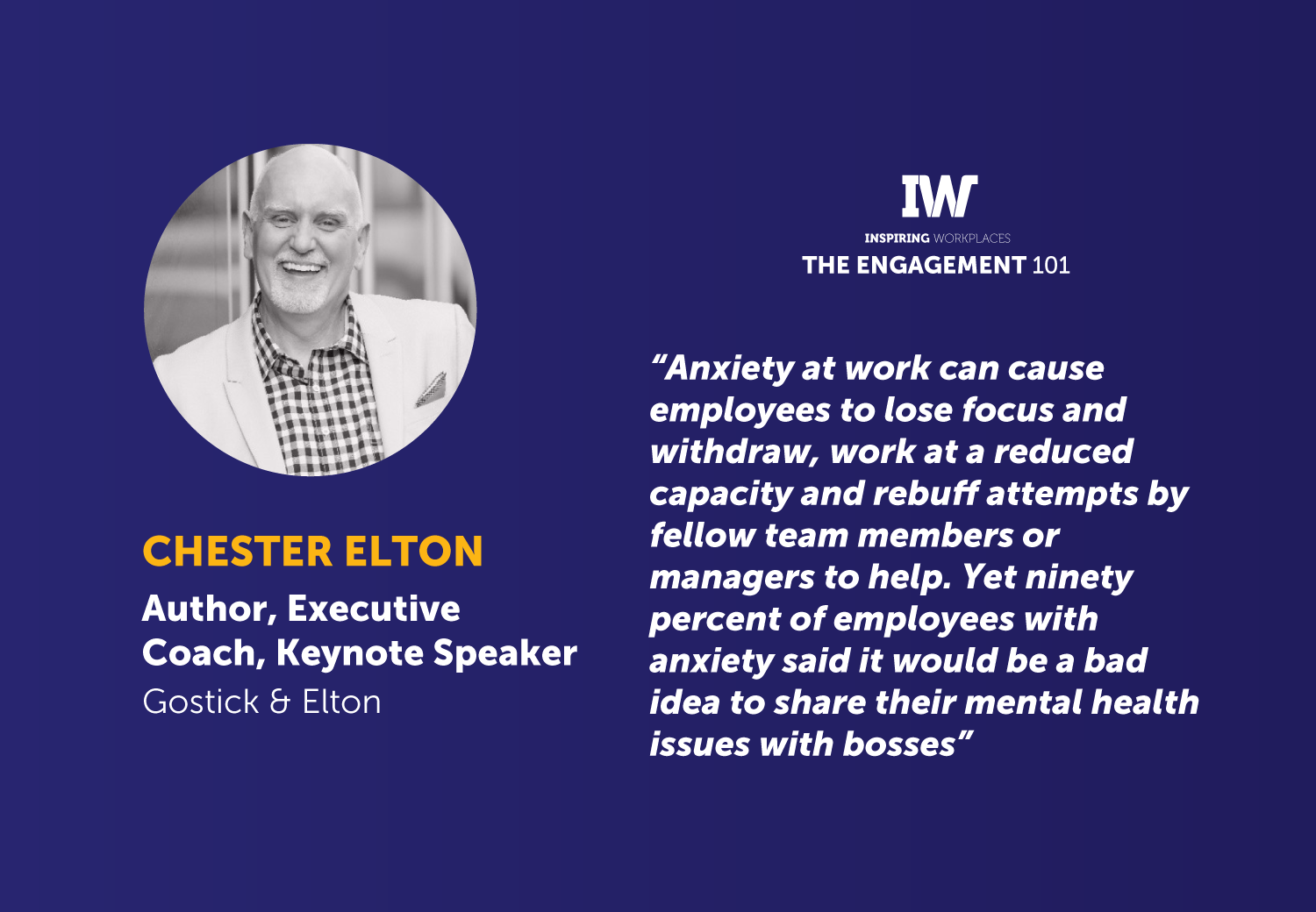
24th May 2021
How to return to the workplace (or not) – in a post covid world – Chester Elton

This snippet is part of our Ebook How to return to the workplace (or not) – in a post covid world. Advice and suggestions from our Top 101 influencers. You can download the full eBook with all the advice here.
Chester Elton, Author, Executive Coach, Keynote Speaker
As people head back to the office, expect anxiety levels to rise.
Research shows on-the-job anxiety leads to increased employee errors, burnout, workplace rage, more sick days, and poor employee health. Anxiety at work can cause employees to lose focus and withdraw, work at a reduced capacity and rebuff attempts by fellow team members or managers to help. Yet ninety percent of employees with anxiety said it would be a bad idea to share their mental health issues with bosses.
Fortunately, there are ways for leaders and employees to counter anxiety and reduce tension as they return to the office. In our new book “Anxiety at Work: Eight Strategies to Help Teams Build Resilience, Handle Uncertainty, and Get Stuff Done,” we outline 8 strategies. Top of the list: Leaders can help ease anxiety of returning employees by adding clarity about the future. Uncertainty triggers physical responses, mostly negative ones, with often detrimental consequences on performance.
A good deal of employee social anxiety can be managed by sharing expectations about the future. Well-thought-out answers to employees’ questions like, “Where are we heading as an organization? Am I adding value? Do I have a future here?” all help employees cool their anxiety once back in the office.
Our research also shows many high-performing people suffering from anxiety doubt themselves and their abilities. That’s especially true when employees return to the office, and face adjustments in their routines. Frequently telling employees their work is appreciated reduces self-doubt. But to reduce employee anxiety in a lasting way, gratitude must be specific and sincere.
For instance, saying “Nice job on that report” is good, and certainly better than saying nothing. But better yet would be to say something like ‘I love how your report provides a short narrative to go along with the numbers. That overview of the market and our place in it was very helpful when we had to explain the findings to the executive team.’

